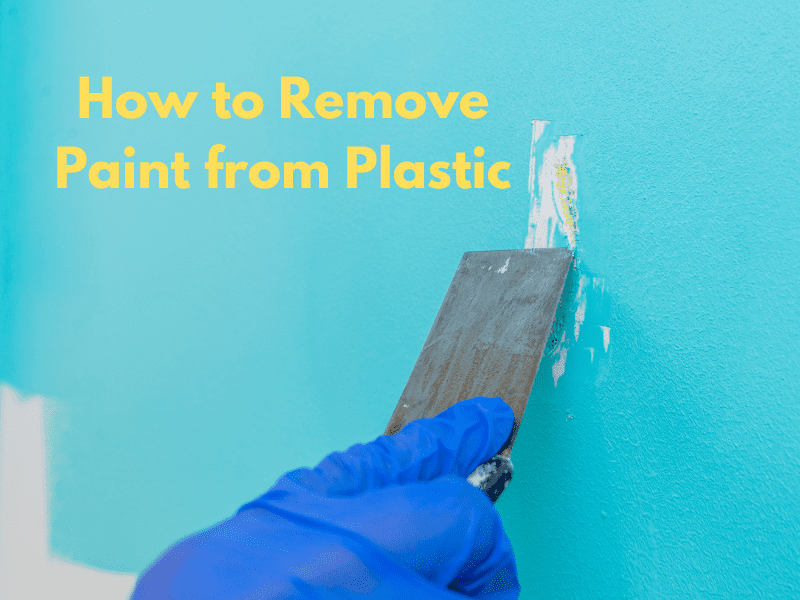Whether you’re dealing with accidental spills, over-sprayed plastic items, or want to remove the old paint for a new coat, knowing how to remove paint from plastic is essential. Plastic can be a sensitive material, and using the wrong techniques could damage the surface.
Table of Contents
Start with the least aggressive methods
Before diving into more aggressive paint removal techniques, starting with the least damaging options is wise. This will help minimize any potential damage to the plastic.
Warm soapy water and a soft cloth
Sometimes, paint on plastic can be removed simply by using warm soapy water and a soft cloth. Mix a few drops of mild dish soap with warm water and gently rub the paint with the cloth. This method is most effective for fresh or water-based paint.
Rubbing alcohol or Isopropyl alcohol
For dried paint or more stubborn stains, you can use rubbing alcohol or isopropyl alcohol. Apply the alcohol to a soft cloth or cotton ball and gently rub the painted area. The alcohol should dissolve the paint without damaging the plastic. However, test a small, inconspicuous area first to ensure that the alcohol does not affect the plastic’s finish.
Use specialized paint removers
If the gentle methods fail to remove the paint, you can try using specialized paint removers. These products are formulated specifically to break down paint without harming the underlying surface.
Acetone-free nail polish remover
Acetone-free nail polish remover can be an effective option for removing paint from plastic. Apply the remover to a soft cloth or cotton ball and gently rub the paint. Remember to test a small area first to ensure compatibility with the plastic.
Commercial plastic-safe paint removers
There are several commercial paint removers available that are designed specifically for use on plastic. Products such as Motsenbocker’s Lift Off, Goo Gone, and Krud Kutter are safe options for removing paint from plastic surfaces. Follow the manufacturer’s instructions for the best results.
Paint thinner
Using paint thinner on plastic is generally not recommended, as it can potentially damage or melt the plastic surface. Many paint thinners contain strong solvents that can dissolve plastic, causing it to become discolored, warped, or even completely destroyed.
However, if you are working with a type of plastic that is known to be resistant to the solvents in paint thinner, you may be able to use it cautiously. To test the compatibility, apply a small amount of paint thinner to an inconspicuous area of the plastic and wait for a few minutes. If there is no visible damage or discoloration, it may be safe to use the paint thinner. Keep in mind that it is still important to be gentle and use as little paint thinner as possible to minimize the risk of damage.
In general, it’s best to use milder methods or specialized paint removers that are specifically designed for use on plastic surfaces, as these are less likely to cause damage.
Scrape the paint
For thick or stubborn paint, you may need to resort to scraping. However, it is essential to be cautious with this method, as it can easily scratch or damage the plastic if not done carefully.
Plastic paint scraper
Using a plastic paint scraper or an old credit card can help minimize the risk of damaging the surface. Gently scrape the paint, being careful not to apply too much pressure.
Soft toothbrush or toothpick
For smaller, more intricate areas, a soft toothbrush or toothpick can be used to gently remove paint. Be cautious not to poke or scratch the plastic surface.
Post-paint removal care
Once the paint has been removed, cleaning and caring for the plastic surface is essential. Rinse the area with clean water to remove any residue from the paint remover, and dry it thoroughly. You may also want to use a plastic polish to restore the surface’s shine and protect it from future damage.
Conclusion
Removing paint from plastic requires patience and the right techniques to prevent damage to the surface. By starting with the least aggressive methods and working your way up, you can safely and effectively remove paint from plastic surfaces. Always test a small, inconspicuous area first to ensure compatibility with the plastic material, and follow any manufacturer’s instructions for the best results.
